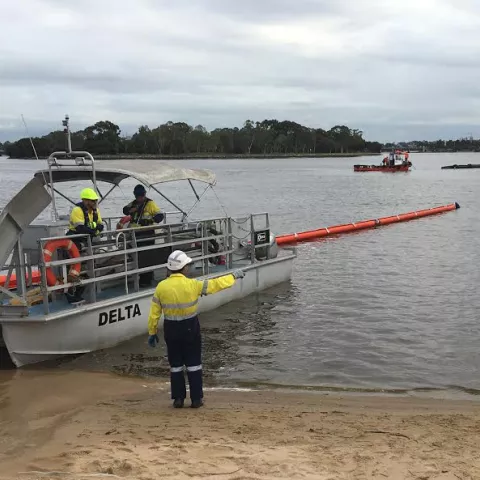
PERTH, Australia and London - The Bureau of Safety and Environmental Enforcement’s (BSEE) Elizabeth Torres was among several BSEE employees who shared perspectives with international colleagues over the past two months. Torres, an international relations specialist, traveled with BSEE’s Doug Morris and Nathan Sinkula to London June 13-15 to attend the International Energy Agency Gas and Oil Technologies Collaboration Programme (GOT) Technical Workshop. “Our staff members definitely share our experiences with other nations during these trips,” Torres commented, “but the perspectives we gain from our counterparts are equally valuable.” She continued, “Many of us share the same problems, and all of us share the connectivity of the oceans.”
Morris, BSEE's chief of Offshore Regulatory Programs, said the London conference focused on, "brownfields, which are mature fields typically at the end of production." Morris continued, "A better understanding and improvement of technology can extend the life of brownfield infrastructure and enhance extraction." Sinkula, chief of BSEE’s Measurement Enforcement and Data Analysis Section, added that the GOT Workshop’s goal was “to create a global dialogue encouraging the development of advanced technology and the policy and regulatory drivers that allow for its use.” Sinkula said that participants focused on, “the challenges related to offshore mature fields” and shared their knowledge of, “recent innovations in technologies to maximize recovery of depleted mature fields.” Sinkula presented a talk that focused on the history and potential of enhanced oil recovery (EOR) operations on the U.S. Outer Continental Shelf (OCS). “The common theme throughout the workshop was the need for cross collaboration between governments, industry, and academia to advance EOR operations and technology,” Sinkula said.
Both Morris and Sinkula agreed that brownfield development is a much larger emphasis for our European colleagues than it is in the U.S. currently. “The potential is large to share knowledge and learn from the EOR focus and research that is ongoing in Europe,” Sinkula pointed out, “and transferring successfully implemented EOR practices in the European offshore environment to the U.S. could lead to millions of barrels of additional recovery.” Morris identified early field life adoption of these practices as optimal, suggesting they could lead to, “even larger recovery potential.”
A month before the GOT workshop, BSEE’s David M. Moore described the latest U.S. approaches to oil spill preparedness for attendees of Spillcon 2016, which was held May 2-6 in Perth, Australia. Spillcon, an international oil spill conference for the Asia‑Pacific region, brings together local, regional, and global environmental and shipping representatives from industry, government and non-government organizations. Moore, BSEE’s chief of the Oil Spill Preparedness Division, described the recent Spillcon as, “the most successful international conference and series of meetings that I have ever attended.”
Participants discussed a range of topics related to spill cause and prevention, preparedness, and response management. Moore described U.S. offshore response planning standards, BSEE’s oil spill preparedness approach, and the Bureau’s oil spill research programs. "The Macondo loss of well control was a watershed moment for the U.S.,” Moore said, “and raised global awareness of the complexities of offshore oil spill response.” Moore explained BSEE’s recently published Well Control Rule and how it will reduce the probability the U.S. will see another incident on the scale of Macondo.
Moore also discussed the need for additional focused oil spill research and the further development of spill countermeasures. He described the many ways BSEE interacts with, “regulators, inventors, and oil spill removal organizations from other countries.” Moore concluded by reminding attendees that everyone attending Spillcon, “shares the universal goal of environmental stewardship.”
